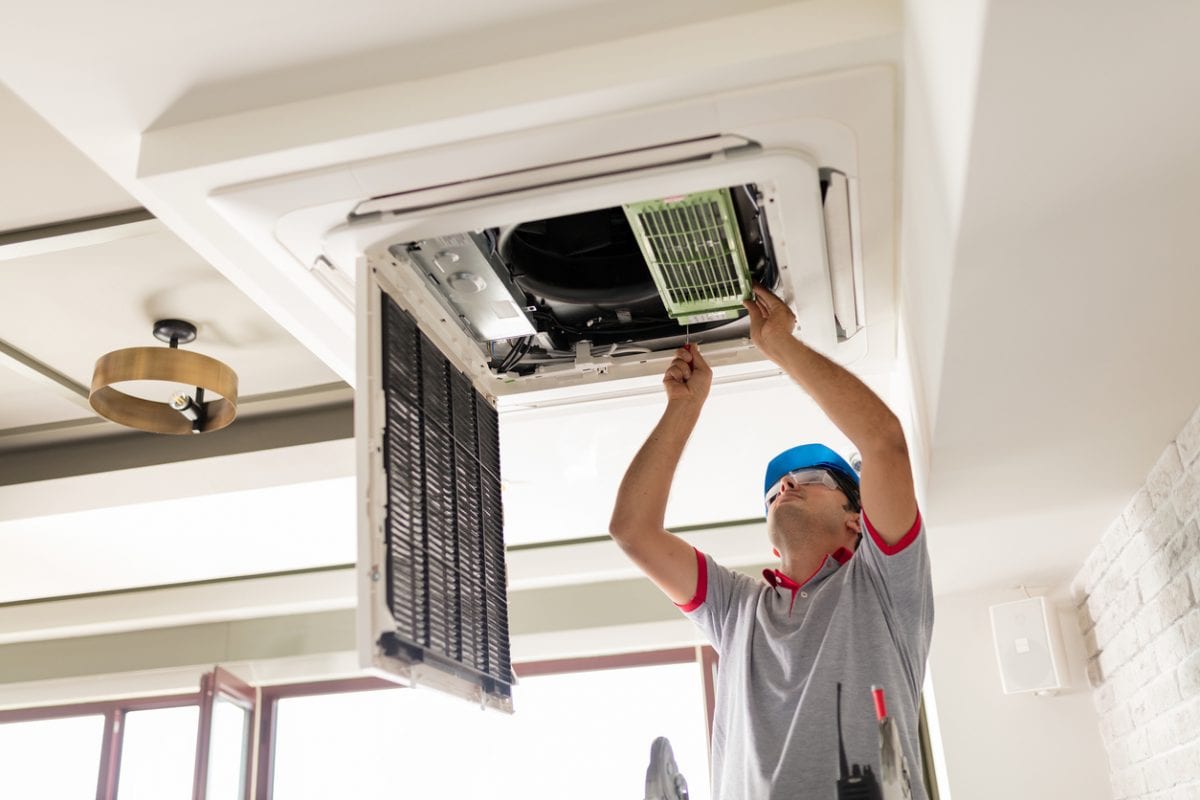
On the surface, facilities maintenance seems like a self-contained concept. But what is a facility maintenance regimen like? What purpose does it serve in the greater scheme of business operations?
Facility maintenance goes beyond fixing broken doors or keeping up on HVAC maintenance. It’s a cumulative, complete oversight of everything that keeps a building running on a day-to-day basis. It considers every element of facilities, deals with duty delegation, involves internal and external personnel, and leverages facilities into strategic operational plans. To say facilities maintenance touches every element of a business isn’t an overstatement, and to understate its importance is a major mistake.
Take a look at what goes into facility maintenance and how inclusive and comprehensive this aspect of business success really is.
Types of building maintenance
What are examples of facilities maintenance? Typically, facilities tasks break down into different categories depending on frequency and severity, with considerations made for aspects like cost, complexity, and whether in-house craftspeople or vendors will assume the duty. For most facilities, the different types of building maintenance break down into the following:
- Scheduled facility maintenance plans: Items you can plan ahead for and put on the calendar.
- Unscheduled maintenance: Issues that occur outside of planned maintenance.
- Emergency maintenance: Unscheduled issues that require timely attention.
- Capital improvements: High-cost, complex modifications outside of the routine.
It’s up to facility managers to categorize maintenance and act appropriately. For example, groundskeeping during the summer months might be on the schedule every Tuesday and Saturday, while a burnt-out lightbulb might come in as a support ticket filed as unscheduled maintenance.
Emergency maintenance items are usually those that pose health hazards or danger to individuals if left unresolved—de-icing the entryway stairs during winter. Capital improvements usually require collaboration with other stakeholders and budget oversight committees.
Hard vs. soft services
Different types of building maintenance get different priority—usually depending on whether they’re a hard or soft service. We’ve covered hard and soft facility maintenance services previously. Here’s a quick recap:
- Hard services deal with the building itself (HVAC, plumbing, electrical)
- Soft services affect operations and people (janitorial, waste management, décor)
While both are important, hard services generally take precedence over soft services because they’re considered vital and emergent. Costs associated with hard services tend to rise the longer they’re unresolved.
Who does the work?
How do you maintain a facility? It’s a good question—especially as facilities become larger and more complex. For small companies, an in-house team might be able to accomplish most basic maintenance; however, as companies grow, they’ll need to lean on more people and broader skillsets to keep a building up-to-standard.
Facilities managers head up building maintenance initiatives and are largely responsible for delegating maintenance tasks. They rely on different groups for support:
- In-house facilities staff: Tasked with basic, timely maintenance items.
- Contracted craftspeople: Tasked with complex, urgent maintenance items.
- Approved vendors (SLA): Tasked with routine, ongoing maintenance items.
Delegation occurs in many ways. Support ticketing is often used as the in-house means of allocating maintenance work. Service Level Agreements (SLAs) create schedules and scopes of work for outside venders to adhere to. Most facility managers also have a network of contract craftspeople they can call on for reputable service.
There’s also the concept of integrated facilities management, which combines as much maintenance work as possible under a single vendor umbrella, to streamline cost and quickness.
Facility maintenance considerations
The last question to ask is… why? Why is it so important to keep up on facility maintenance and dedicate such broad resources and attention to a building? Is this focus on overhead really worth it?
Absolutely. Facilities touch every part of a company’s operations and are integral to the strategic initiatives it puts forth. Without a well-run, well-maintained workplace, a company lacks a significant asset and might even find itself facing a major hindrance to success. A facility manager effectively has two goals:
- Operational: Create a safe, accessible, comfortable, useful environment for employees, visitors, and clients.
- Strategic: Assist the company in meeting broad revenue goals and KPIs through conscious overhead management.
Facilities maintenance is cumulative. Every task accomplished adds up to facilities that run right, which paves the way for employees to do their best work, which allows a company to grow and succeed. Nothing is more important than a well-maintained, sturdy foundation—for most companies, that foundation is their facilities.
Facilities demand constant upkeep
The most impressive aspect of facility maintenance is that it’s ever-present. Facility upkeep happens daily and requires a forward-looking approach to stay ahead of emerging needs. While a facilities manager may oversee and coordinate facility maintenance, it takes an entire team to execute tasks at every level.
The irony of great facility maintenance is that, done right, it often goes unnoticed. When everything works as it should, frictionless and unencumbered, employees, visitors, and anyone else interacting with facilities will have a seamless experience. It’s a reward well worth the investment of time, energy, and capital.
Keep reading: Get Familiar with a Facility Maintenance Plan


